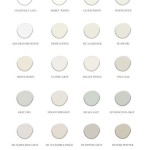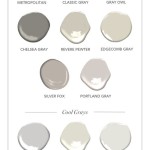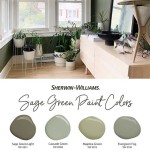What Does A Ford Paint Code Look Like On A Car?
Identifying the paint code on a Ford vehicle is crucial for various purposes, including touch-up work, body repair, and matching paint during customization. The paint code, a combination of letters and numbers, precisely specifies the color formulation applied to the vehicle at the factory. Understanding the location and format of this code allows for accurate paint matching, ensuring a seamless repair or modification.
Ford paint codes are not universally standardized across all models and years. The specific location and format can vary; however, some general patterns and common locations exist. This article explores the typical characteristics of Ford paint codes, where to find them on the vehicle, and how to interpret them for accurate paint identification.
Typical Format of Ford Paint Codes
Ford paint codes generally consist of a combination of letters and numbers. The length and specific characters used can vary depending on the year and model of the vehicle. Unlike some manufacturers that use solely numerical or alphabetical codes, Ford typically uses an alphanumeric system. This means the code will contain both letters and numbers, allowing for a broader range of color designations.
The exact format can be influenced by factors such as the paint supplier and the specific paint system used during the vehicle's production. Older vehicles might have simpler codes, while newer models may feature more complex codes reflecting the increasing sophistication of automotive paint technology and the wider range of available colors and effects.
A common format includes a two-character code consisting of either two letters, two numbers, or a combination of one letter and one number. For instance, a code might be "YN," "73," or "D3." These shorter codes often represent single-stage paints. However, certain three or more character codes combining letters and numbers may exist for newer or more complex paints.
In addition to the primary paint code, supplemental information might be present on the vehicle identification sticker. This could include the paint name or additional codes related to specific paint properties or application processes. This supplemental information, although not the primary paint code itself, can be useful in confirming the correct paint identification, especially in situations where the primary code is ambiguous or difficult to interpret.
It's also important to distinguish between the paint code and other codes present on the vehicle's identification sticker. These other codes might relate to trim levels, interior colors, or other optional equipment. Care should be taken to isolate the correct code that specifically designates the exterior paint color.
Common Locations for Finding the Ford Paint Code
The paint code is usually located on a sticker or plate affixed to the vehicle's body. The precise location of this sticker can vary depending on the Ford model and year of manufacture. Several common places exist where the paint code is commonly found. Knowing these locations greatly simplifies the process of identifying the correct paint code.
The driver's side door jamb is a frequently used location. Open the driver's side door and carefully inspect the doorframe around the latch area. A white or silver sticker is typically present, containing various vehicle information, including the VIN (Vehicle Identification Number), tire pressure specifications, and the paint code. The paint code is usually labeled with terms such as "Paint," "Ext Pnt," or simply "Color Code."
Another common location is the engine compartment. Look for a sticker or plate attached to the firewall, fender, or radiator support. The sticker will likely contain a variety of manufacturing information, including the paint code. The "Paint" designation is often near the bottom of the sticker, or grouped with other color-related information about the vehicle.
The glove compartment is another potential location, although less common than the door jamb or engine compartment. Check inside the glove compartment door or on the sidewalls of the compartment for a sticker containing vehicle information. The paint code might be listed among other manufacturing details.
Finally, for some older Ford models, the paint code might be stamped directly onto the metal of the body. This is less common in newer vehicles that rely primarily on stickers. If stickers are missing or damaged, examining the body panels in less visible areas, such as under the hood or inside the trunk, might reveal a stamped code.
In cases where the sticker is missing or illegible, obtaining the paint code through other means is necessary. A Ford dealership can often retrieve the paint code using the vehicle's VIN. Online databases and paint code lookup tools are also available, allowing users to enter the VIN and retrieve the corresponding paint information.
Interpreting the Ford Paint Code
Once the paint code is located, understanding its meaning and how it translates to the specific paint color is essential. The paint code itself is an abbreviation, representing a specific paint formulation. Decoding this code allows for accurate mixing or ordering of the correct paint for the vehicle.
The paint code is typically used in conjunction with paint mixing systems. Paint suppliers and automotive paint retailers use these systems to translate the code into the exact proportions of various pigments and binders needed to replicate the original factory color. Entering the paint code into the system ensures that the correct mixture is formulated.
The paint code does not always directly correlate to the common name of the paint color. While some paint codes might include a hint of the color name, such as "RR" for "Race Red," this is not always the case. Relying solely on the common name can lead to errors, as similar-sounding names might represent slightly different shades or formulations.
Furthermore, the paint code does not typically provide information about the paint finish, such as whether it is a solid color, metallic, pearl, or tricoat. This information is usually separate and may be indicated by additional codes or descriptions. Metallic paints often require different application techniques and clear coats than solid colors. Pearl and tricoat paints are multi-stage processes that require specialized application and blending techniques.
When ordering paint based on the paint code, it is crucial to verify that the paint supplier can accurately interpret the code and provide the correct formulation. Providing the vehicle's VIN can further assist in ensuring accuracy, as the VIN can be used to cross-reference the paint code and confirm its validity for that specific vehicle.
It is also advisable to perform a test spray of the mixed paint before applying it to the vehicle. This allows for visual verification of the color match and ensures that any subtle variations or discrepancies are identified before the final application. A test spray can reveal whether the paint needs further adjustment or tinting to achieve a perfect match.
Different manufacturers use different paint codes, and even within Ford, there can be variations across different years and models. This means a paint code for a 2010 Ford might not be the same as a paint code for a 2020 Ford, even if the color appears visually similar. Therefore, always use the specific paint code for the vehicle in question to ensure accurate paint matching.
In summary, successfully identifying and interpreting a Ford paint code requires careful attention to detail. Locating the code on the vehicle, understanding its format, and using it in conjunction with reliable paint mixing systems are essential steps in ensuring accurate paint matching and a professional-quality finish. While the process might seem straightforward, neglecting any of these steps can lead to mismatched paint and unsatisfactory results. Consulting with experienced automotive paint professionals can provide further guidance and ensure that the correct paint is selected and applied.

What Is The Paint Code For My Vehicle

Find My Ford Europe Color Code N Drive

Ford Paint Codes Touch Up Paintscratch Com

How To Find Your Paint Code Partify

2024 Ford Focus Paint Code Location

Locating Your Vehicle S Paint Code Racingjunk News

3 Ways To Find The Paint Color Code On Ford Vehicles Wikihow

How To Find A Paint Code On Any Vehicle Fast All Models

What Is The Paint Code Of My Vehicle

How To Find Your Car Color Code Match Paint By Vin
Related Posts








